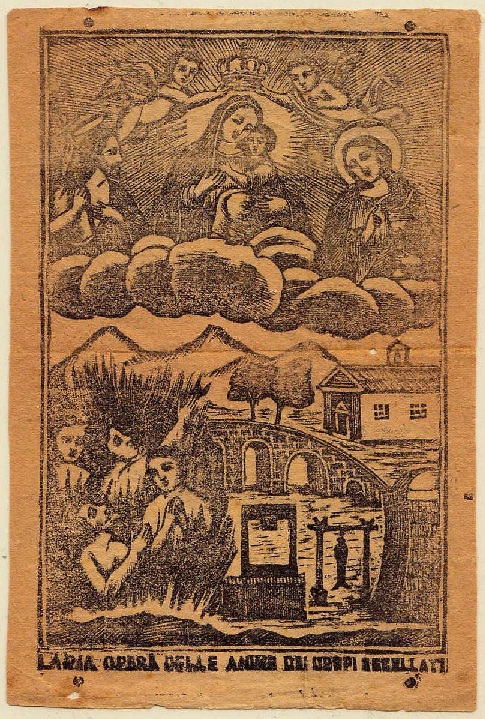
Ancient lithography representing the elements of devotional practices towards the holy souls of the executed in Sicily.
June 29, 1972 – The U.S. Supreme Court ruled (5-4) that capital punishment was a violation of the Eighth Amendment prohibiting “cruel and unusual punishment.” The decision spared the lives of 600 individuals then sitting on death row. Four years later, in another ruling, the Court reversed itself and determined the death penalty was not cruel and unusual punishment. On October 4, 1976, the ban was lifted on the death penalty in cases involving murder.
Executions and the corpses of the executed have always fascinated people. Stories about the corpses fill books of folklore, legends and mythology. A hanged man’s hand was used to cure warts and skin tumors in England. All sorts of body parts were used in magic and medicine and these were taken from the corpses of the executed either by the executioner or by people who came to unearth and exhume the bodies of the executed in graveyards.
Prayers, folklore and customs from Southern Italy testify that even the souls of criminals had their part in the devotional practices of the population. Invoking the holy souls of the executed who dwelled for a long time in Purgatory, people established a compassionate connection between the actual and the heavenly world. The Catholic and political context of places like 19th-century Sicily, where the bandit might be seen as a popular hero who opposed the Bourbon oppressor, strongly connotes the concept of “holy soul”.
